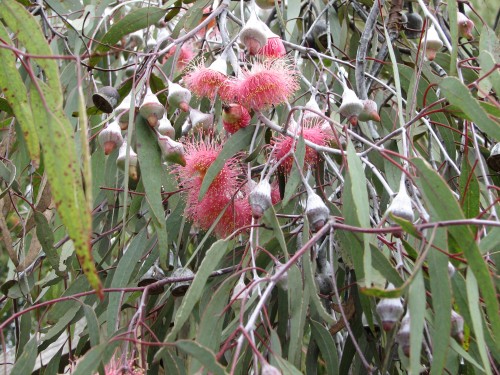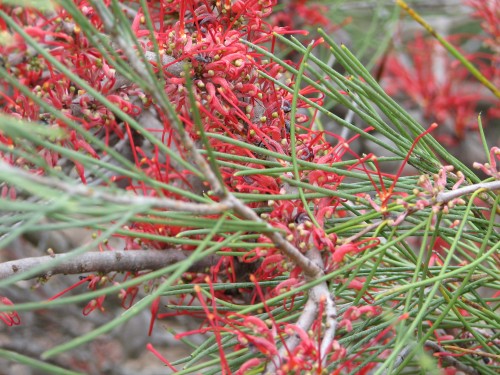Lost my right hand man to Writers’ Week again today. Hopefully I can get some potting on done and also finalise the plant list for the plant sale. I keep finding species that I missed when I did the list the other day.
Meanwhile I have plants presenting great cutting material and I would love to be sidetracked by that job also. Everything comes in waves in the Nursery. Zillions of jobs needing to be done now, and then periods of watching things grow until the next wave of potting on. (Until I visit someone with a native garden and plants presenting cutting material).
Sometimes I feel like Peter Cundell on the ABC TV gardening programme, Gardening Australia. Put a pair of secateurs, or loppers in his hands and the personality changes as he attacks plants with glee. He is usually pruning, while I go mad taking cuttings.
The above reminds me of a friend whose plants always looked wonderful, in flower or not. She was a self confessed mad pruner but without the tools. She made a practice of constant tip pruning of all her native shrubs. That is, removing the top growing tip containing a couple of leaves. This forces the plant to make new growth back along the branches. As a result, flowering is much improved because of the greater number of shoots on the bushes. It often looked as though she had used shears to trim the plants.
I remember seeing her after one Plant Sale with a basket of plants and before she had got back to her car every one of them had been tipped pruned. “Can’t help myself!” she said.
It is a hint I often pass on to customers at Plant Sales. People are often disappointed with the appearance of native plants as they get older. They don’t usually have time to prune at a particular time in the plant’s seasonal growth. Tip pruning often solves this. The exception to this is for a plant which has a naturally upright habit, where tip pruning could ruin the shape of the plant.

